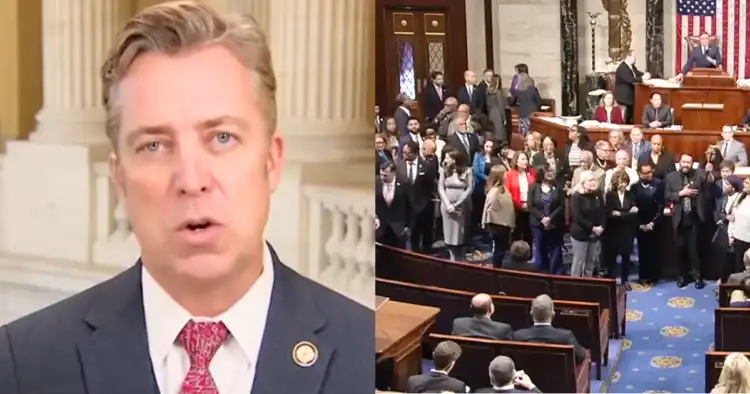In a landmark ruling, the U.S. Supreme Court has declined to block nearly $2 billion in payments to contractors associated with the U.S. Agency for International Development (USAID), marking a significant setback for the Trump administration. The 5-4 decision has reignited debates among conservatives regarding judicial influence over executive powers, especially concerning foreign aid spending.
BREAKING: Justice Amy Coney Barrett sides with liberals in 5-4 ruling to force Trump White House to fund foreign nations.
— Resist the Mainstream (@ResisttheMS) March 5, 2025
Over $2 billion of American taxpayer money is slated to go abroad, thanks to the ruling. pic.twitter.com/tmFcsziEEa
The Supreme Court’s ruling follows a lower court’s directive that mandated the unfreezing of funds previously withheld by the Department of Government Efficiency (DOGE) as part of an extensive audit aimed at identifying waste and fraud within USAID programs. On March 5, the Court’s refusal to intervene in this lower court decision led to criticism from conservative justices who have long supported stricter oversight on foreign aid distribution.
Justice Amy Coney Barrett sided with the liberal justices in the decision, which has drawn sharp reactions from Trump supporters. Critics allege that some justices are undermining the former president’s policies to curb foreign aid expenditures. In their dissent, Justices Clarence Thomas, Neil Gorsuch, Brett Kavanaugh, and Samuel Alito expressed grave concerns about the authority of a district court to command such large-scale disbursements of taxpayer funds.
HOLY SH*T 🚨 Look at how Justice Amy Coney Barrett looks at Trump. It all makes sense now
— MAGA Voice (@MAGAVoice) March 5, 2025
After working tirelessly to get her on the Supreme Court, she repays him by voting with Liberals
USAID SHOULD BE ABOLISHED
pic.twitter.com/txsAP11G5B
Justice Alito described the situation as “stunning,” questioning whether a single district court judge should have the power to compel the release of nearly $2 billion without sufficient checks and balances. This sentiment reflects broader anxieties among conservatives about the implications of judicial decisions affecting executive discretion in foreign policy matters.
The legal dispute arose after U.S. District Judge Amir Ali, appointed by President Biden, set a deadline for the Trump administration to comply with the order to unfreeze the funds. The administration contended that logistical challenges would make it impossible to process such a significant amount of money within the imposed timeline.
BREAKING: The Supreme Court has ruled that President Trump must unfreeze $1.9 billion in foreign USAID payments. Unbelievable.
— Charlie Kirk (@charliekirk11) March 5, 2025
Justice Samuel Alito BLASTS the majority with Justices Thomas, Gorsuch, and Kavanaugh joining in dissent:
"Does a single district-court judge who… pic.twitter.com/mt8eL4yj7L
Chief Justice John Roberts temporarily suspended the enforcement of the order last week, allowing additional time for the case to be deliberated. However, the Court emphasized that further guidance from the lower court would be necessary to outline how the government could fulfill its obligations under the current restraining order.
Legal experts like Steve Vladeck, a professor at Georgetown University Law Center, noted that while the ruling did not impose an immediate requirement to release the funds, it opened the door for the district court to issue clearer directives regarding the payment process. Vladeck pointed out that the dissenting opinions may indicate a rift among the justices concerning future cases related to Trump’s policies.
At the center of this conflict is the Trump administration’s broader policy to freeze foreign aid payments, aimed at eliminating inefficiencies and ensuring the responsible use of taxpayer dollars. The nearly $2 billion in question pertains to payments owed to contractors and aid organizations for completed USAID-funded projects.
The administration has voiced concerns that mandating the release of these funds could encroach upon the executive branch’s constitutional authority concerning foreign policy. Acting U.S. Solicitor General Sarah Harris argued that while claims of unpaid funds were valid, the district court’s imposed timeline was impractical, potentially undermining presidential powers regarding foreign affairs.
So the Supreme Court Justices heard all the USAID fraud listed and still ruled the next day to force the President of the United States to disburse another $2 BILLION.
— George (@BehizyTweets) March 5, 2025
The courts are becoming a huge hindrance to the Golden Age Agenda…
pic.twitter.com/d9XMFM45k4
Amidst this backdrop, the Supreme Court’s decision is likely to resonate in political circles, stirring discussions about the role of the judiciary in shaping foreign policy. As tensions between judicial authority and executive control continue to unfold, this ruling may set precedents that will influence the future of American foreign aid.
The implications of this ruling extend beyond the immediate financial concerns, as they highlight the ongoing struggle over the balance of power within the federal government. Observers anticipate that this decision could lead to further legal challenges and debates surrounding the appropriate limits of judicial intervention in executive actions, especially as the political landscape evolves in response to shifting administrations.
As the discussion continues, all eyes remain on how the Trump administration will navigate the complexities introduced by this Supreme Court ruling and what it means for the future of foreign aid policy in the United States.





